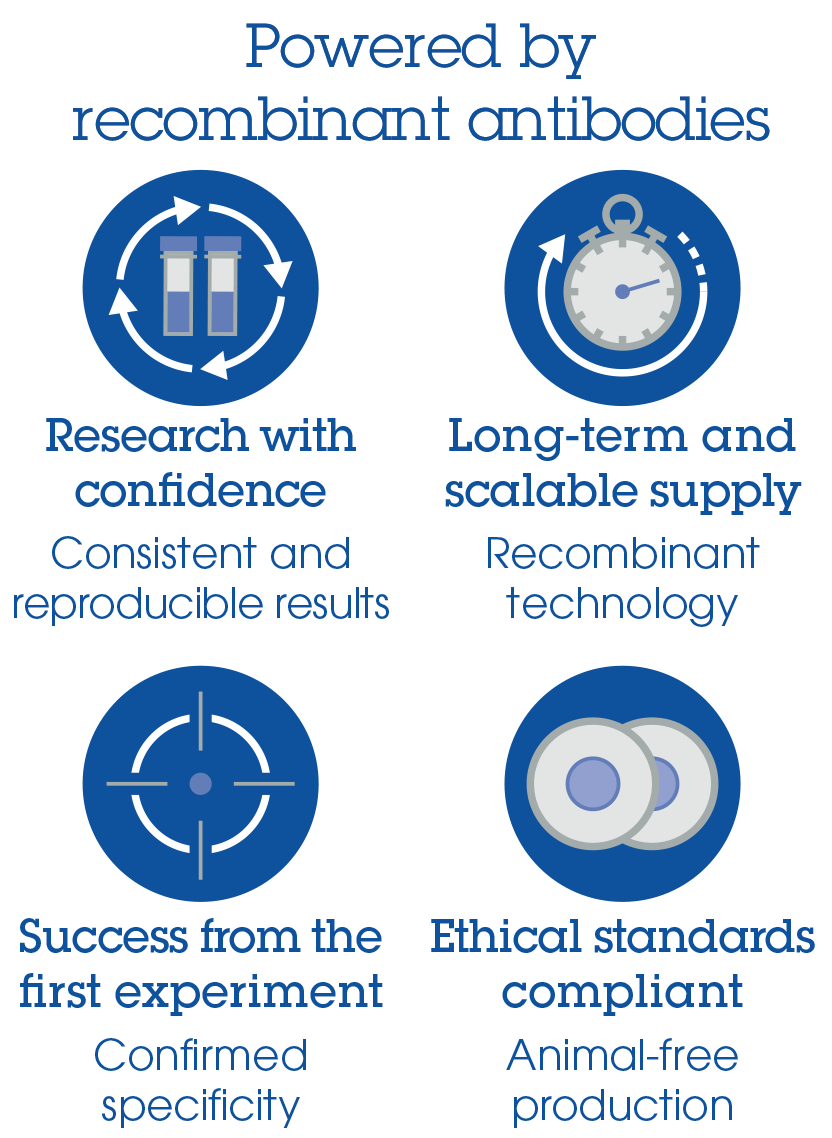Mouse alpha-1-antitrypsin Antibody Pair - BSA and Azide free (ab270366)
Key features and details
- Unconjugated capture and detector antibodies
- Adaptable to any antibody pair-based assay format
- Antibody concentration ~ 1 mg/ml
- BSA and azide free buffer - ready for conjugation
- Reacts with: Mouse
Overview
-
Product name
Mouse alpha-1-antitrypsin Antibody Pair - BSA and Azide free
See all alpha 1 Antitrypsin kits -
Assay type
ELISA set -
Range
104.688 ng/ml - 6700 ng/ml -
Species reactivity
Reacts with: Mouse -
Product overview
The Antibody Pair can be used to quantify Mouse alpha-1 antitrypsin. BSA and Azide free antibody pairs include unconjugated capture and detector antibodies suitable for sandwich ELISAs. The antibodies are provided at an approximate concentration of 1 mg/ml as measured by the protein A280 method. The recommended antibody orientation is based on internal optimization for ELISA-based assays. Antibody orientation is assay dependent and needs to be optimized for each assay type. Both capture and detector antibodies are rabbit monoclonal antibodies delivering consistent, specific, and sensitive results.
For additional information on the performance of the antibody pair, see the equivalent SimpleStep ELISA® Kit (ab267809), which uses the same antibodies. However, due to differences in their formulation, this antibody pair cannot be used with the consumables provided with our SimpleStep ELISA Kits. Please note that the range provided for the pairs is only an estimation based on the performance of the related product using the same antibody pair. Performance of the antibody pair will depend on the specific characteristics of your assay. We guarantee the product works in sandwich ELISA, but we do not guarantee the sensitivity or dynamic range of the antibody pair in your assay.
Download SDS here.
-
Tested applications
Suitable for: Sandwich ELISAmore details -
Platform
Reagents
Properties
-
Storage instructions
Store at +4°C. Please refer to protocols. -
Carrier free
Yes -
Components 10 x 96 tests Mouse alpha-1-antitrypsin Capture Antibody (unconjugated) 1 x 100µg Mouse alpha-1-antitrypsin Detector Antibody (unconjugated) 1 x 100µg -
Research areas
-
Function
Inhibitor of serine proteases. Its primary target is elastase, but it also has a moderate affinity for plasmin and thrombin. Irreversibly inhibits trypsin, chymotrypsin and plasminogen activator. The aberrant form inhibits insulin-induced NO synthesis in platelets, decreases coagulation time and has proteolytic activity against insulin and plasmin.
Short peptide from AAT: reversible chymotrypsin inhibitor. It also inhibits elastase, but not trypsin. Its major physiological function is the protection of the lower respiratory tract against proteolytic destruction by human leukocyte elastase (HLE). -
Tissue specificity
Ubiquitous. Expressed in leukocytes and plasma. -
Involvement in disease
Alpha-1-antitrypsin deficiency -
Sequence similarities
Belongs to the serpin family. -
Domain
The reactive center loop (RCL) extends out from the body of the protein and directs binding to the target protease. The protease cleaves the serpin at the reactive site within the RCL, establishing a covalent linkage between the carboxyl group of the serpin reactive site and the serine hydroxyl of the protease. The resulting inactive serpin-protease complex is highly stable. -
Post-translational
modificationsN-glycosylated. Differential glycosylation produces a number of isoforms. N-linked glycan at Asn-107 is alternatively di-antennary, tri-antennary or tetra-antennary. The glycan at Asn-70 is di-antennary with trace amounts of tri-antennary. Glycan at Asn-271 is exclusively di-antennary. Structure of glycans at Asn-70 and Asn-271 is Hex5HexNAc4. The structure of the antennae is Neu5Ac(alpha1-6)Gal(beta1-4)GlcNAc attached to the core structure Man(alpha1-6)[Man(alpha1-3)]Man(beta1-4)GlcNAc(beta1-4)GlcNAc. Some antennae are fucosylated, which forms a Lewis-X determinant.
Proteolytic processing may yield the truncated form that ranges from Asp-30 to Lys-418. -
Cellular localization
Secreted. Endoplasmic reticulum. The S and Z allele are not secreted effectively and accumulate intracellularly in the endoplasmic reticulum and Secreted, extracellular space, extracellular matrix. - Information by UniProt
-
Alternative names
- A1A
- A1AT
- A1AT_HUMAN
see all
Images
-
To learn more about the advantages of recombinant antibodies see here.








